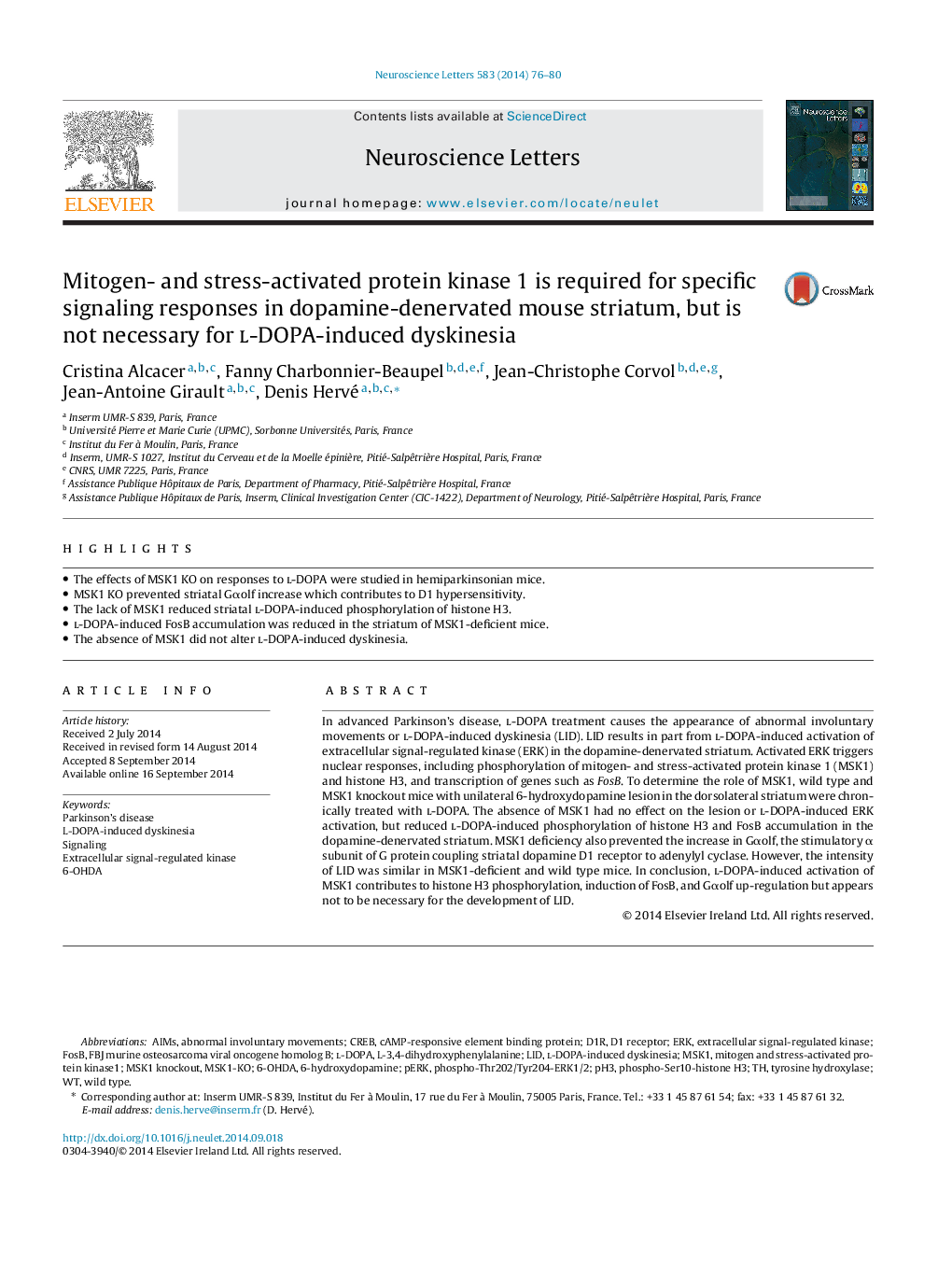| Article ID | Journal | Published Year | Pages | File Type |
|---|---|---|---|---|
| 4343557 | Neuroscience Letters | 2014 | 5 Pages |
•The effects of MSK1 KO on responses to l-DOPA were studied in hemiparkinsonian mice.•MSK1 KO prevented striatal Gαolf increase which contributes to D1 hypersensitivity.•The lack of MSK1 reduced striatal l-DOPA-induced phosphorylation of histone H3.•l-DOPA-induced FosB accumulation was reduced in the striatum of MSK1-deficient mice.•The absence of MSK1 did not alter l-DOPA-induced dyskinesia.
In advanced Parkinson's disease, l-DOPA treatment causes the appearance of abnormal involuntary movements or l-DOPA-induced dyskinesia (LID). LID results in part from l-DOPA-induced activation of extracellular signal-regulated kinase (ERK) in the dopamine-denervated striatum. Activated ERK triggers nuclear responses, including phosphorylation of mitogen- and stress-activated protein kinase 1 (MSK1) and histone H3, and transcription of genes such as FosB. To determine the role of MSK1, wild type and MSK1 knockout mice with unilateral 6-hydroxydopamine lesion in the dorsolateral striatum were chronically treated with l-DOPA. The absence of MSK1 had no effect on the lesion or l-DOPA-induced ERK activation, but reduced l-DOPA-induced phosphorylation of histone H3 and FosB accumulation in the dopamine-denervated striatum. MSK1 deficiency also prevented the increase in Gαolf, the stimulatory α subunit of G protein coupling striatal dopamine D1 receptor to adenylyl cyclase. However, the intensity of LID was similar in MSK1-deficient and wild type mice. In conclusion, l-DOPA-induced activation of MSK1 contributes to histone H3 phosphorylation, induction of FosB, and Gαolf up-regulation but appears not to be necessary for the development of LID.
